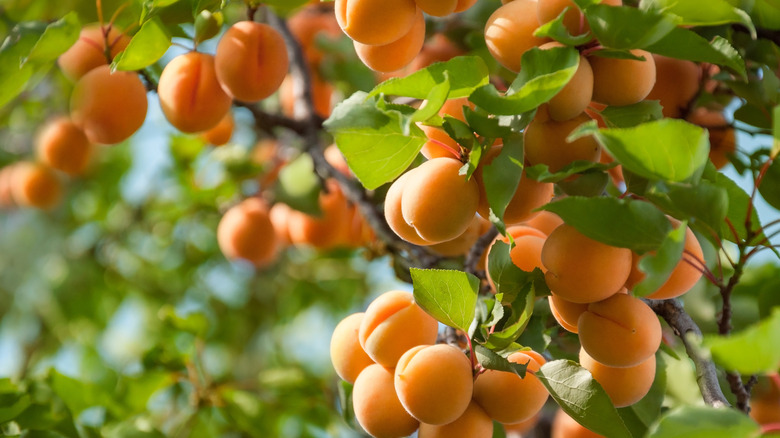How To Grow An Apricot Tree From Seed (& Common Mistakes To Avoid)
We may receive a commission on purchases made from links.
The Prunus armeniaca, commonly known as the apricot, is a small fruit that bears a striking similarity to peaches while being slightly more tart. Trees bloom fragrant pinkish-white flowers in spring, and you can usually harvest them once they have developed a full yellow to deep orange hue between late June through August. If you want some fresh, dried, or preserved ones, grow an apricot tree from seed yourself.
Are you munching on the sweet flesh from your vitamin C powerhouse now? Your future tree may lay inside it. After removing and setting aside the pit, use a gentle crack of a hammer to release the seed. Germination starts with an overnight soak in room-temperature water. Wrap the seed in a wet paper towel before placing it in a plastic bag in the fridge. Keep the temperature at 32 to 45 degrees Fahrenheit until it sprouts in a month or two.
In spring, pick a sunny spot with room for the tree to spread. Ensure you know how to prep the soil before planting a tree; in this case, you need loamy soil with a pH between 6.5 and 8.0. Add your sprouting apricot seed in a 6-inch hole. Do you have a curious digging pup or wild animals nearby? Use a planting screen to protect the seed. Depending on climate, it needs water one to three times a week. If you want a productive apricot tree that can thrive from your seed, be mindful of the following common mistakes to avoid.
Common mistakes to watch when growing an apricot tree
One of the first things to consider before planting a fruit tree is its location. A bad spot can deprive it of enough space for the sun to hit it six hours daily, but far enough from structures to spread. Harvesting apricots is easier in USDA hardiness zones five through nine, which have moderate climates. Such areas can provide the necessary dormancy period when temps get chilly.
If the soil isn't loamy enough for apricots, you can add compost or other organic matter to help. Check the pH with a SONKIR meter. You may get excited as your tree begins to produce bountiful fruit, but are you harvesting and pruning enough? Clustering fruit growing too closely together can block sunlight and air circulation, as can overgrown or diseased branches. Regularly pruning and harvesting helps you check for destructive borers — tiny beetles that destroy the cambium by laying eggs in holes they create. Larvae hatch and continue to eat away. Aphids leave behind sooty mold and honeydew that can stunt growth, but neem oil or a blast of insecticidal soapy water can run them off.
Worried over a lack of fruit? Review your fertilizer or watering practices. Waterlogging can kill apricot tree roots and you may need to add more phosphorus to the fertilizer. Once you understand everything you should know before planting an apricot tree, you may have blossoming flowers and fresh apricot jam for years.

